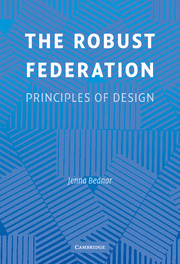Book contents
8 - Tying the Gordian Knot
Published online by Cambridge University Press: 05 June 2012
Summary
James Madison's writings motivate most of the analysis in this book, so naturally I turn to him as I conclude my argument. In June of 1821, Madison's friend Spencer Roane, a judge on the Virginia Supreme Court of Appeals, wrote for guidance on disputes in the way federal and state courts interpreted the constitution. Madison wrote the following passage in his reply:
The Gordian Knot of the Constitution seems to lie in the problem of collision between the federal & State powers, especially as eventually exercised by their respective Tribunals. If the knot cannot be untied by the text of the Constitution it ought not, certainly, to be cut by any Political Alexander.
A Gordian Knot is an intricate problem, insoluble in its own terms. As the Greek myth goes, in order to win the prophesized rule of Asia, Alexander cut through the knot rather than untie it. Alexander's brash brandishing of the sword may have cemented his reputation for boldness, but it also revealed his readiness to violate the terms of a problem. He did not untie the knot: he eliminated it for his own ends. This sort of opportunistic reinterpretation is exactly what a federation needs to guard against.
A constitution may divide authority between states and the federal government, but written rules do not eliminate the essential problem of federalism: how to prevent rivalry between governments from spoiling a union's potential.
Information
- Type
- Chapter
- Information
- The Robust FederationPrinciples of Design, pp. 213 - 219Publisher: Cambridge University PressPrint publication year: 2008
